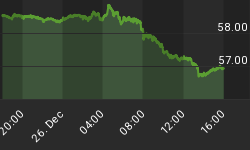On Thursday, some quarterly figures from the oil majors started coming in – and they are mostly negative. Royal Dutch Shell reported a staggering $18 billion quarterly loss, made worse by a $16.8 billion write-down on a range of its assets. The huge loss came after earning $3 billion in the second quarter of 2019 and reporting a profit of $2.7 billion in the first quarter of this year. When excluding the write-down and other one-off items, Shell eked out a net profit of $638 million.
The $16.8 billion write-down was expected, and even came in at the lower end of the range it offered in June. Even so, the number is stunning, with impairments related to LNG, lower crude oil prices and lower refining margins. The company’s gearing ratio – a ratio of net debt-to-capital – rose to 32.7 percent, up from 28.9 percent at the end of the first quarter.
Shell warned that it may have to curtail production in the third quarter because of concerns about demand, which will “likely have a variety of impacts on our operational and financial metrics.”
Meanwhile, some other companies also reported poor figures as well. Eni reported a net loss of 4.41 billion euros in the second quarter, taking its half-year results to a loss of 7.34 billion euros. The figure included an impairment of 3.5 billion euros, largely the result of lowered oil price assumptions going forward. The Italian oil company also cut capex deeper, and notably, overhauled its dividend policy to track oil prices, rather than a fixed shareholder payout. That amounts to a cut in payouts for this year at least.
ConocoPhillips reported a $1 billion loss in the second quarter, with roughly a quarter of its production shut in during the second quarter. The company said that it was bringing production back online and expects to fully restore output by September.
On Wednesday, Total announced an $8 billion impairment on the value of its assets, largely related to Canada’s oil sands. The French oil giant will report quarterly results on August 4.
But there was a silver lining for Shell and some of the other European majors. Several of them were able to take advantage of extreme price volatility to profit from trading, and their trading units cushioned the blow to other parts of their companies. For instance, Shell’s $1.5 billion in earnings from trading was 30 times higher than the same period a year earlier, and after excluding one-off items such as the massive impairment, earnings from trading allowed adjusted results to come out in positive territory.
But that is not something that the majors can bank on going forward. Trading won’t be able to offset the declining prospects of their core business – producing and refining oil and gas.
It is against that backdrop that the companies nervously eye long-term demand trends. “Demand will take a long time to recover if it recovers at all,” van Beurden told reporters.
Related: What Is Behind Gold's Astonishing Rally?
Behind Total’s large write-down was a downward revision in assumed long-term oil prices. The company assumes Brent will average $56.80 per barrel between 2020 and 2050, which seems to be an admission that prices likely won’t spike in the future, or at least, won’t spike for any lengthy duration. Total expects what sounds like one last upcycle: “Total maintains its analysis that the weakness of investments in the hydrocarbon sector since 2015 accentuated by the health and economic crisis of 2020 will result by 2025 in insufficient worldwide production capacities and a rebound in prices,” the company said in a statement. But beyond 2030, oil demand will have peaked and will converge towards $50 in the long-term, the company said.
Total undertook a review of the risk of “stranded assets,” which would refer to reserves beyond 20 years and with high production costs. Canada’s oil sands are the most likely victim of such an analysis; of Total’s $8 billion write-down, $7 billion of that figure was concentrated in Canada’s oil sands. Total’s holdings in Fort Hills and Surmont bore the brunt of the write-down.
The French company said that it would no longer invest in Canada’s oil sands and would even leave the Canadian Association of Petroleum Producers (CAPP), an industry trade group, due to the “misalignment between their public positions” and Total’s, which would appear to be a reference to climate change. Total is aiming for carbon neutrality by 2050.
The two American oil giants – ExxonMobil and Chevron – report on Friday. To date, they have charted a different course than their European counterparts, resisting efforts to transition to low-carbon energy sources.
Exxon is also pursuing a different strategy on its spending priorities. Reuters reports that Exxon will cut staff and capex even deeper in a “last ditch” effort to preserve its dividend. The company has already had to take on $18 billion in debt this year in order to cover spending and its shareholder payouts. More debt will be needed to keep those payments going, but it’s not clear that it can stick to that strategy forever. “There is only so much Exxon can continue to lean on its balance sheet before they start to jeopardize” Jennifer Rowland, an analyst with Edward Jones told Reuters.
By Nick Cunningham for Oilprice.com
More Top Reads From Safehaven.com:

















